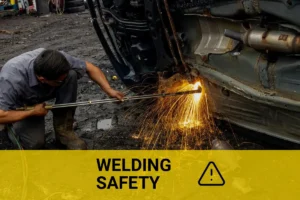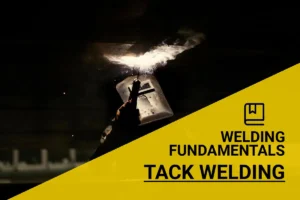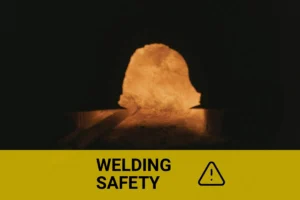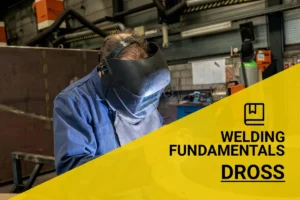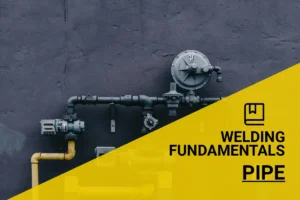What is GMAW Welding? Understanding Process, Use, and Benefits
Published on: March 31, 2025 | Last modified: March 4, 2025
By: Joe Carter
GMAW stands for Gas Metal Arc Welding. It’s a popular welding process using a continuous wire feed and a shielding gas.
A common inquiry I receive is about what is gmaw welding. Understanding this process is crucial for anyone in the welding field. From my experience, it’s helped many welders achieve cleaner, stronger joints with less effort.
In this article, we’ll cover what GMAW is, how it works, various types, setup steps, quality factors, unique issues, aftercare tips, industry applications, and alternatives. You’ll learn about the advantages of GMAW welding and the type of welding machines and power sources typically used.
Contents
- What is GMAW Welding?
- How Does GMAW Welding Work?
- Types Of GMAW Welding
- Common GMAW Welding Terms You Should Know
- Steps to Set Up GMAW Welding
- Factors Affecting GMAW Welding Quality
- Unique Issues in GMAW Welding
- Industry Applications for GMAW Welding
- Alternatives for Achieving Results Similar to GMAW Welding
- Frequently Asked Questions (FAQs)
- Conclusion
- References
What is GMAW Welding?
This welding method uses a continuous wire electrode and shielding gas. It’s fast, versatile, and produces high-quality welds. Typical applications include automotive, aerospace, and construction due to its efficiency and cost-effectiveness, making it a fundamental technique in welding fundamentals.
How Does GMAW Welding Work?
Gas Metal Arc Welding, or Gas Metal Arc Welding, is a modern welding process. It uses a continuous wire feed that acts as both the electrode and filler material. This type of welding typically operates at voltages between 18 V and 40 V, creating an electric arc that melts the metal and filler wire. The process is shielded by gas, usually a mix of argon and carbon dioxide, to prevent contamination.
GMAW is known for its speed and versatility. It can weld various metals like stainless steel, carbon steel, and aluminum, often producing cleaner results than other welding methods.
I once used GMAW to stitch aluminum parts for an outdoor project. The process was quick and efficient, allowing me to finish in under an hour. Using the right machine made a significant difference in achieving a smooth, strong weld.
Types Of GMAW Welding
Metal Inert Gas (MIG) Welding
MIG welding is a popular GMAW type that uses a solid wire electrode. This method allows for quick welding with minimal cleanup. To MIG weld, you feed the wire into a welding gun, melt it, and create a strong bond by shielding it with inert gas, like argon. Understanding the cost of various welding supplies is essential for budgeting, which leads to a closer look at how much welding rods cost.
Flux-cored Arc Welding (FCAW)
FCAW uses a hollow wire filled with flux to shield the weld. It’s effective for combating contaminants in outdoor settings. In FCAW welding, you use a specialized filler that generates its own shielding gas as it melts, providing good penetration and speed.
Self-shielded Welding
Self-shielded welding doesn’t require extra gas; the wire itself creates the shield. This makes it useful in windy conditions. For self-shielding, simply feed the flux-cored wire into the gun, where the melting flux generates gas to protect the weld.
Gas-shielded Welding
In gas-shielded welding, external gas protects the weld pool. This method offers stability and cleanliness. For gas-shielding, set up gas flow along with a solid wire to maintain a controlled environment for strong welds. Proper welding techniques are essential when working with fuel containers to ensure safety and integrity, as outlined in this guide to welding a gas tank.
Pulsed Arc Welding
Pulsed arc welding alternates between high and low amperage pulses. This provides more control, especially for thin materials. To effectively use this method, it is essential to adjust the machine settings for a controlled pulse, thereby facilitating welding guidance that creates precise and clean welds.
Exploring economical options for a suitable cheap MIG welder can help those new to pulsed arc welding get started effectively.
We’ve wrapped up the various types of GMAW welding here. Next up, we’ll look at essential GMAW welding terminology.
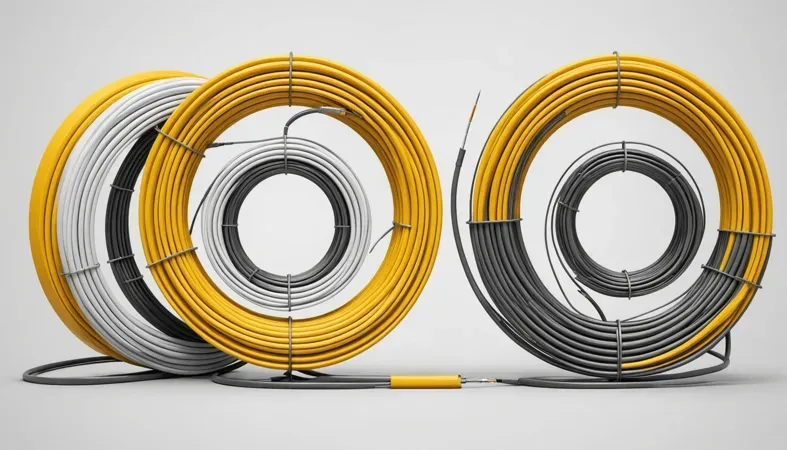
Common GMAW Welding Terms You Should Know
If you’re diving into GMAW welding, it’s helpful to understand some key terms. Here’s a handy list of definitions that’ll guide you.
| Term | Description |
|---|---|
| Arc Length | The distance between the electrode and the workpiece. Shorter arcs are more stable but may cause burn-through. |
| Bead | The weld’s finished appearance. A good bead is even and has a slight crown. |
| Contact Tip | Part of the welding gun that guides the electrode wire. Regular checks can prevent burn-out. |
| Weld Pool | The molten metal created during the welding process. It should remain controlled to prevent imperfections. |
| Filler Metal | Metal added to the weld joint to strengthen it. It should match or complement the base materials. |
We have now covered essential GMAW welding terminology. Next, we will examine how to set up GMAW welding.
Steps to Set Up GMAW Welding
Now, we’ll cover the steps for GMAW welding to achieve effective results.
-
Prepare the Work Area
Start by cleaning the work area. Remove contaminants—dust, grease, and rust are big no-nos. Ensure there’s enough room for your movements without bumping into anything. A clutter-free space significantly boosts safety and efficiency.
Organize your materials within arm’s reach to minimize unnecessary movement. I typically maintain an area of at least 3 square meters (32 Square Feet) for GMAW work. This provides enough space to maneuver and maintain your equipment.
-
Select the Right Equipment
Choose a GMAW welding machine that suits your project. Look for one operating between 50-600 amps; this range handles most materials, including steel and aluminum. Also, decide between a continuous wire feed and spool gun based on the filler material. Discover the intricate process of what constitutes a weld to better understand the essentials of welding.
Don’t forget to select a suitable welding gas! Argon or a mix of argon and carbon dioxide is commonly used. The typical mixture ratio is 75% argon and 25% CO2 for optimal penetration and weld quality.
-
Set the Proper Parameters
Adjust key parameters on your machine. Voltage usually ranges from 18 to 25 volts for most applications. Higher voltage creates a wider bead; lower voltage results in deeper penetration.
Next, set the wire feed speed based on your weld thickness. Start around 200 to 300 inches per minute, and adjust as needed. I recommend practice runs to find the sweet spot for your specific material and thickness. If you’re selecting equipment and want to know how much welding machines cost, ensure that it fits your project requirements.
-
Choose the Correct Filler Material
Select a filler material that complements the base metal. For example, ER70S-6 is great for mild steel, while ER4047 works best for aluminum. Matching the filler to the base material ensures a strong bond in your welds.
To achieve the best home welding results, understanding how to choose the best welding machine is crucial.
Also, consider wire diameter. For thin materials (Less Than 1/8 Inch or 3.18 Mm), use 0.023 inches (0.6 Mm) wire. For thicker pieces, use 0.035 inches (0.89 Mm) or even 0.045 inches (1.14 Mm). This choice affects heat input and penetration.
-
Perform a Test Weld
Always do a test weld. Use the settings you’ve established to see if the weld bead looks right. A good bead should be uniform in width and have a smooth finish—no humping or crackling.
Weld on a scrap piece that matches your work material. If it’s thin, use a quicker travel speed. If adjustments are needed, tweak the voltage or wire feed speed. Remember, this step’s crucial for ensuring good results on your actual project! Additionally, understanding the specifics of consumables can improve efficiency, such as knowing how many 1/8″ 7018 welding rods in a pound.
We’ve wrapped up the steps for setting up GMAW welding here. Next up, we’ll look at factors affecting GMAW welding quality.
Factors Affecting GMAW Welding Quality
What factors impact the effectiveness of gas metal arc welding?
-
Welding Voltage
The welding voltage typically ranges from 18 to 30 volts. Higher voltage can increase arc length but may lead to excessive spatter.
-
Wire Feed Speed
Optimal wire feed speed usually falls between 250 to 600 inches per minute (IPM) or 6.35 to 15.24 meters per minute. Incorrect feed speeds can cause poor penetration or burn-through.
-
Gas Flow Rate
The shielding gas flow rate is critical, typically set between 15 to 30 cubic feet per hour (CFH) or 7 to 14 liters per minute (LPM). A flow rate that’s too low can lead to contamination and weld defects.
-
Weld Joint Preparation
Ensure your weld joint is clean and properly aligned. Inadequate preparation can increase the chances of defects like porosity.
-
Operator Skill Level
An experienced operator can effectively adjust parameters and techniques. Skill level is vital for reducing errors and improving weld quality.
We covered factors influencing GMAW welding quality. Next, we will cover distinct challenges in GMAW welding.
Unique Issues in GMAW Welding
Let’s examine specific challenges with GMAW welding.
-
Burn-through on Thin Metals
GMAW can cause burn-through, especially on materials under 1/8 inch (3.2 Mm). Look for holes to identify it. To prevent this, reduce the amperage by 10-20% and move the torch faster.
-
Spatter and Cleanup Challenges
GMAW often produces excessive spatter. Clean the weld area before starting, and if spatter occurs, adjust the voltage. Use a wire brush or grinder for quick cleanup.
-
Electrode Wear and Feed Problems
GMAW’s wire can wear or feed unevenly. Listen for stuttering noises; this indicates feeding issues. Ensure the drive rolls are tight and replace worn-out rollers.
-
Humidity and Its Effects
GMAW’s efficiency decreases in high humidity. Moisture can cause rust on wires and lead to poor arcs. Store welding material in dry places to keep it moisture-free.
-
Inconsistent Weld Penetration
In GMAW, inconsistent penetration can happen if the arc length isn’t managed. Look for shallow or uneven weld beads. Adjust the stick-out length to about 3/8 inch (9.5 Mm) to improve penetration.
Understanding precise welding positions is crucial for effective welding. Discover more about 3G welding techniques to enhance your skills.
Industry Applications for GMAW Welding
I’ve known people to use GMAW welding for everything from cars to buildings. However, it has many unique applications, such as:
- Aerospace Manufacturing: GMAW excels at welding structural components, like airplane frames. Its speed and precision are perfect for keeping them lightweight and strong.
- Automotive Assembly: This method is widely used for spot welding body panels. Its efficiency reduces production time, helping manufacturers produce cars faster.
- Shipbuilding: GMAW’s versatility is key in joining large metal sections. It can be used in various environments, making it popular in this tough industry.
- Pipeline Construction: GMAW is ideal for welding pipelines due to its ability to create strong, durable joints. It’s a go-to choice for many because it minimizes defects.

Alternatives for Achieving Results Similar to GMAW Welding
If you’re looking for alternatives to GMAW, consider Flux-Cored Arc Welding (FCAW). It’s excellent for outdoor work, as it’s more tolerant to wind. I’ve personally seen great results using a Lincoln Electric Pro-MIG 180 for both mild and stainless steel projects. Choosing the right materials enhances the quality of your welding projects, and there are various sources to purchase metal for welding.
Another option is Shielded Metal Arc Welding (SMAW), often called stick welding. It’s versatile and works well in tight spaces. For thicker materials, I recommend the ESAB Rebel 215, which delivers power and portability. Both methods can provide reliable results without needing a gas supply.
Frequently Asked Questions (FAQs)
Now let us look at some common questions I typically get asked.
Is GMAW the Same As MIG?
No, GMAW is not the same as MIG. GMAW stands for Gas Metal Arc Welding, which includes MIG (Metal Inert Gas) as one of its methods. Both utilize a continuous wire feed but differ in gas usage and applications, such as cost efficiency and versatility.
What Are the Advantages Of GMAW Welding?
Yes, GMAW welding has several advantages. It offers high welding speed, minimal post-weld cleanup, and works well on thin materials. Plus, it can operate in many positions, improving accessibility and efficiency.
What Type Of Welding Machine is Used for GMAW?
A GMAW welding machine typically uses a power source that provides constant voltage. Common examples are inverter-based MIG welders, which range in price from $500 to $2,500, offering various features from portability to advanced controls. For those interested in enhancing their welding setups, understanding how to build a bridge rectifier for an AC welder can be beneficial.
What is the Difference Between GMAW and TIG Welding?
The main difference between GMAW and TIG welding is their process. GMAW uses a consumable wire electrode, while TIG (Tungsten Inert Gas) uses a non-consumable tungsten electrode. This affects speed, skill level, and application precision.
What Type Of Power Source is Used in GMAW Welding?
The type of power source used in GMAW welding is a constant voltage power source. This allows for smooth and stable arc characteristics, which is crucial for producing clean welds consistently.
What Does GMAW Stand for in Welding?
GMAW stands for Gas Metal Arc Welding. It represents a process where a continuous wire delivers filler metal while shielding gas prevents contamination. This method is highly efficient and versatile, suitable for various settings.
Conclusion
You made it to the end of our journey into GMAW welding. We covered what GMAW welding is, how it works, different types of GMAW welding, setting it up, factors that affect quality, unique issues, aftercare tips, industry applications, and alternatives. Hopefully, you feel more informed after exploring these topics like what GMAW stands for, the power sources needed, and its advantages.
To recap, GMAW welding stands for Gas Metal Arc Welding. It’s a process that uses a pooled arc between a continuous wire electrode and the workpiece, along with shielding gas, to create a strong weld. Hopefully, I was able to impart some of my experience so you can see how GMAW welding is effective for tasks like manufacturing and repair, ensuring optimal results in as little as 5 to 10 minutes!
For additional insights and practical advice on welding, visit What is Welding.
References
- American Welding Society. (2015). AWS D1.1/D1.1M: Structural Welding Code – Steel. Miami, FL: AWS.
- Lincoln Electric. (2020). The Procedure Handbook of Arc Welding (15th ed.). Cleveland, OH: Lincoln Electric Company.
Joe Carter is a retired welding professional with over 40 years of hands-on experience in the industry, spanning ship repair, structural welding, and even underwater projects. Joe is a master of MIG, TIG, and Stick welding. Passionate about mentoring the next generation of welders, Joe now shares his decades of expertise and practical insights to help others build rewarding careers in welding.
American Welding Society, Gas Metal Arc Welding, GMAW, MIG Welding, Welding, Welding Applications, Welding Equipment, Welding Techniques, Welding Wire

